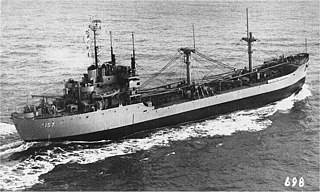 W
WUSS Alcona (AK-157) was an Alamosa-class cargo ship commissioned by the U.S. Navy for service in World War II. She was responsible for delivering troops, goods and equipment to locations in the war zone.
 W
WUSS Allegan (AK-225) was a Crater-class cargo ship commissioned by the U.S. Navy for service in World War II. She was responsible for delivering troops, goods and equipment to locations in the war zone.
 W
WUSS Antrim (AK-159) was an Alamosa-class cargo ship in the United States Navy. She was named for Antrim County, Michigan.
 W
WUSS Auburn (AGC-10) was a Mount McKinley-class amphibious force command ship, named for the hill Mount Auburn just northwest of Cambridge, Massachusetts. She was designed as an amphibious force flagship, a floating command post with advanced communications equipment and extensive combat information spaces to be used by the amphibious forces commander and landing force commander during large-scale operations.
 W
WUSS Balduck (APD-132) was a Crosley-class high speed transport of the United States Navy, named after Marine Corporal Remi A. Balduck (1918–1942), who was killed during the Battle of Guadalcanal. For his actions he was posthumously awarded the Navy Cross.
 W
WUSS Benzie County (LST-266) was an LST-1-class tank landing ship built for the United States Navy during World War II. Named for Benzie County, Michigan, she was the only U.S. Naval vessel to bear the name.
 W
WUSS Berrien (APA-62) was a Gilliam-class attack transport that served with the US Navy during World War II.
 W
WUSS Burdo (APD-133) was a Crosley-class high speed transport of the United States Navy, in service from 1945 to 1958. She was finally sold for scrap in 1967.
 W
WUSS LST-519 was an LST-491-class tank landing ship built for the U.S. Navy in World War II. She was later renamed USS Calhoun County (LST-519 after counties in eleven states in the United States
 W
WUSS Cheboygan County (LST-533) was an LST-491-class tank landing ship built for the United States Navy during World War II. Named for Cheboygan County, Michigan, she has so far been the only U.S. Naval vessel to bear the name. The name Cheboygan also means "Big Boat".
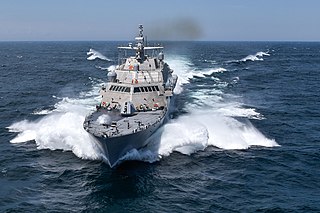 W
WUSS Detroit (LCS-7) is the fourth Freedom-class littoral combat ship of the United States Navy. The ceremonial “laying of the keel” was in early November 2012 at the Marinette Marine shipyards in Marinette, Wisconsin. The ship was launched on 18 October 2014.
 W
WHMS Detroit was a 20-gun sloop of the Royal Navy, launched in July 1813 and serving on Lake Erie during the War of 1812. She was the most powerful British ship in the Lake Erie squadron until the Americans captured her during the Battle of Lake Erie on 10 September 1813. Detroit was commissioned into the United States Navy as its first USS Detroit. However, she was so damaged that the sloop took no further part in the war. Postwar, Detroit was sunk for preservation at Misery Bay off Presque Isle until 1833, when she was refloated and converted for commercial service. In 1841, Detroit was reduced to a hulk at Buffalo, New York where she was purchased with the intent of sending her over Niagara Falls. The plan went awry and Detroit ran aground on a shoal before the falls and broke up.
 W
WUSS Detroit (AOE-4) was the fourth and last Sacramento-class fast combat support ship built for the United States Navy. She was laid down on 29 November 1966 by Puget Sound Naval Shipyard, Bremerton, Washington; launched 21 June 1969; and commissioned on 28 March 1970. She is the fifth United States Navy ship named after Detroit, Michigan, the largest city in the state of Michigan, and the river of the same name.
 W
WUSS Detroit (C-10) was a Montgomery-class unprotected cruiser of the United States Navy which was authorized by an Act of Congress in September 1888. Detroit was launched on 28 October 1891 at Columbian Iron Works, Baltimore, Maryland, sponsored by Miss F. Malster. The cruiser was commissioned on 20 July 1893 with Commander Willard Herbert Brownson in command. It was the third ship to be named for Detroit, Michigan.
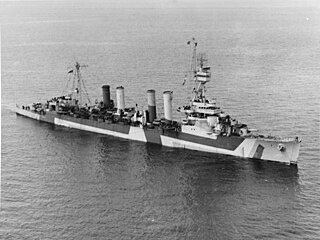 W
WUSS Detroit (CL-8) was an Omaha-class light cruiser, originally classified as a scout cruiser, of the United States Navy. She was the fourth Navy ship named for the city of Detroit, Michigan. She spent her first eight years as part of the Scouting Fleet either in the Atlantic or Mediterranean. Her first duty was to assist in the USAAS's first aerial circumnavigation of the world in 1924 and transported the United States Secretary of State Frank B. Kellogg, in 1927, from Ireland to France for the negotiations that led to the signing of the Kellogg-Briand Pact. In 1931 she joined the Battle Force, where her home port was San Diego until moving to Pearl Harbor in 1941. Detroit was moored next to her sister Raleigh when the Japanese attacked on the morning of 7 December 1941.
 W
WUSS Donald W. Wolf (APD-129) was a Crosley-class high speed transport of the United States Navy, in service from 1945 to 1946. In 1965, she was transferred to the Republic of China Navy as ROCS Hua Shan (PF-33) and served until being struck and scrapped.
 W
WUSS Douglas H. Fox (DD-779) an Allen M. Sumner-class destroyer, was named in honor of Lieutenant Commander Douglas H. Fox, the commanding officer of the destroyer USS Barton, who went down with his ship when she was torpedoed and sunk in the naval battle of Guadalcanal on 13 November 1942. Fox was posthumously awarded the Navy Cross for his contribution to the defeat of a superior enemy force in this battle, and was later awarded a Gold Star in lieu of a second Navy Cross for earlier actions on 26 and 30 October and 3 November, when he rescued survivors of the aircraft carrier USS Hornet under hazardous conditions.
 W
WUSCGC Escanaba (WMEC-907) is a United States Coast Guard medium endurance cutter based in Boston, Massachusetts. Her keel was laid on April 1, 1983 at Robert Derecktor Shipyard Incorporated, Middletown, Rhode Island. She was launched February 6, 1985 and is named for her predecessor, USCGC Escanaba (WPG-77) which sank during world war two, and was named for the Escanaba River and Escanaba, Michigan. Escanaba (WMEC-907) was formally commissioned August 29, 1987 in Grand Haven, Michigan, the home port of her predecessor.
 W
WThe USCGC Escanaba (WPG-77) was a 165 ft (50 m) "A" type United States Coast Guard cutter stationed on the Great Lakes from her commissioning in 1932 until the start of U.S. military involvement in World War II in 1941. With the outbreak of war, Escanaba redeployed to participate in the Battle of the Atlantic, during the course of which she was ultimately lost with nearly all hands. Struck by either a torpedo or mine in the early morning of 13 June 1943, while serving as a convoy escort, Escanaba suffered a fiery explosion and sank within minutes, leaving only two survivors and one body out of her 105-man crew to be found on the surface by rescuers.
 W
WUSS Flint (AE-32/T-AE-32) is a Kilauea-class ammunition ship of the United States Navy, and was named after the sparking rock flint. Flint was constructed at the Ingalls Nuclear Shipbuilding Division, Litton Industries, Inc., Pascagoula, Mississippi. The ship was delivered to the United States Navy at Charleston, South Carolina, on 30 August 1971.
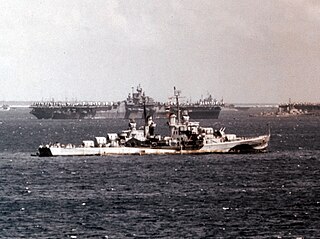 W
WUSS Flint (CL-97) was a modified Atlanta-class light cruiser, sometimes referred to as an "Oakland-class". She was named after the city of Flint, Michigan. She was launched on 25 January 1944 by Bethlehem Shipbuilding Corporation of San Francisco, California, sponsored by Mrs. R. A. Pitcher. She was and commissioned on 31 August 1944, with Captain C. R. Will in command. She was reclassified CLAA-97 on 18 March 1949.
 W
WThe Cannon class was a class of destroyer escorts built by the United States primarily for ocean antisubmarine warfare escort service during World War II. The lead ship, USS Cannon, was commissioned on 26 September 1943 at Wilmington, Delaware. Of the 116 ships ordered, 44 were cancelled and six were commissioned directly into the Free French Forces. Destroyer escorts were regular companions escorting the vulnerable cargo ships.
 W
WUSS George (DE-697) was a Buckley-class destroyer escort. She was the second ship of the United States Navy named after Seaman Second Class Eugene F. George (1925–1942), who was posthumously awarded the Navy Cross for his heroism on USS San Francisco at the Naval Battle of Guadalcanal.
 W
WUSS Gerald R. Ford (CVN-78) is the lead ship of her class of United States Navy aircraft carriers. The ship is named after the 38th President of the United States, Gerald Ford, whose World War II naval service included combat duty aboard the light aircraft carrier Monterey in the Pacific Theater.
 W
WUSS Grand Island (PF-14), a Tacoma-class frigate, was the only ship of the United States Navy to be named for Grand Island, Nebraska.
 W
WUSS Hammerberg (DE-1015), a Dealey-class destroyer escort, was a ship of the United States Navy named for Navy diver Francis P. Hammerberg (1920–1945), of Flint, Michigan, who was awarded the Medal of Honor posthumously for rescuing two fellow divers from a wreck in Pearl Harbor.
 W
WUSS Harry L. Corl (APD-108) was a Crosley-class high speed transport that served in the United States Navy from 1945 to 1946. Harry L. Corl was transferred to South Korea in 1966 and served as Ah San until 1984. She was subsequently scrapped.
 W
WUSS Ionita (SP-388) was a yacht acquired by the U.S. Navy during World War I. Ionita was outfitted by the Navy as a patrol craft and reported to the Commander, 9th Naval District, headquartered at Lake Bluff, Illinois. Ionita patrolled the Detroit River and was struck by the Navy at war’s end.
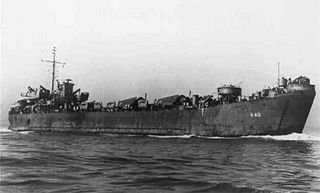 W
WUSS Iron County (LST-840) was an LST-542-class tank landing ship built for the United States Navy during World War II. Named after counties in Michigan, Missouri, Utah, and Wisconsin, she was the only U.S. Naval vessel to bear the name.
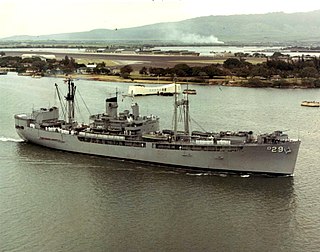 W
WUSS Isle Royale (AD-29) was a Shenandoah-class destroyer tender named for an island of the Great Lakes.
 W
WUSS Kalamazoo (AOR-6) was a Wichita-class replenishment oiler commissioned by the U.S. Navy in 1973. She continued to support Navy requirements until 1996 when she was placed in the reserve fleet and later struck.
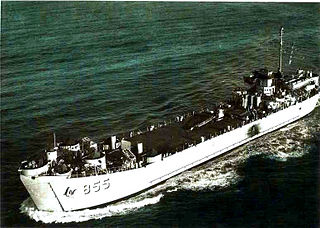 W
WUSS Kent County (LST-855) was an LST-542-class tank landing ship built for the United States Navy during World War II. Named after counties in Delaware, Maryland, Michigan, Rhode Island, and Texas, she was the only U.S. Naval vessel to bear the name.
 W
WUSS Lake County (LST-880) was an LST-542-class tank landing ship built for the United States Navy during World War II. Named after counties in twelve U.S. states, she was the only U.S. Naval vessel to bear the name.
 W
WUSS Lenawee (APA-195) was a Haskell-class attack transport built and used by the US Navy in World War II and saw further service during the Korean War and Vietnam War. She was a Victory ship design, VC2-S-AP5. She was named after Lenawee County, Michigan, USA.
 W
WUSS Livingston (AP-163/AK-222) was a Crater-class cargo ship built for the US Navy during World War II. She was responsible for delivering troops, goods and equipment to locations in the Asiatic-Pacific Theater.
 W
WUSS Benzie County (LST-266) was an LST-1-class tank landing ship built for the United States Navy during World War II. Named for Benzie County, Michigan, she was the only U.S. Naval vessel to bear the name.
 W
WUSS LST/LST(H)-486 was an LST-1-class tank landing ship built for the United States Navy during World War II.
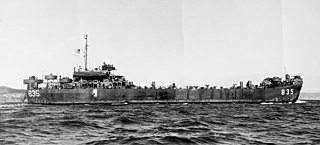 W
WUSS LST-835 was an LST-542-class tank landing ship built for the United States Navy during World War II. Late in her career, she was renamed Hillsdale County (LST-835) — after Hillsdale County, Michigan, the only U.S. Naval vessel to bear the name — but saw no active service under that name.
 W
WThe second USS Mackinac (AVP-13) was a United States Navy Barnegat-class small seaplane tender in commission from 1942 to 1947 that saw service during World War II. After the war, she was in commission in the United States Coast Guard from 1949 to 1967 as the cutter USCGC Mackinac (WAVP-371), later WHEC-371, the second ship of the Coast Guard or its predecessor, the United States Revenue Cutter Service, to bear the name.
 W
WUSCGC Mackinaw (WAGB-83) is a 290-foot (88 m) vessel specifically designed for ice breaking duties on the Great Lakes. LR number: 6119534 According to the Ice Breaker Mackinaw Maritime Museum, the vessel has been known as the "Queen of the Great Lakes" and "The Largest Icebreaker on the Great Lakes"; the site states that "she was built ... during World War II to meet the heavy demands of war materials and transportation during the winter months".
 W
WUSCGC Mackinaw (WLBB-30) is a 240-foot (73 m) vessel built as a heavy icebreaker for operations on the North American Great Lakes for the United States Coast Guard. IMO number: 9271054. She should not be confused with a namesake ship, the USCGC Mackinaw (WAGB-83), IMO number 6119534, which was decommissioned on June 10, 2006.
 W
WUSS Marquette (AKA-95) was an Andromeda-class attack cargo ship named after counties in Michigan and Wisconsin. She served as a commissioned ship for 10 years.
 W
WUSS Marsh (DE-699) was a Buckley-class destroyer escort of the United States Navy, named after Ensign Benjamin R. Marsh, Jr., USNR, who was killed on board the battleship Arizona during the attack on Pearl Harbor.
 W
WMecosta (YTB-818) was a United States Navy Natick-class large harbor tug named for Mecosta, Michigan.
 W
WUSS Michigan was the United States Navy's first iron-hulled warship and served during the American Civil War. She was renamed USS Wolverine in 1905.
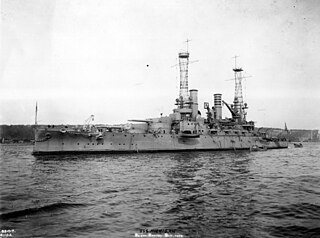 W
WUSS Michigan (BB-27), a South Carolina-class battleship, was the second ship of the United States Navy to be named in honor of the 26th state. She was the second member of her class, the first dreadnought battleships built for the US Navy. She was laid down in December 1906, launched in May 1908; sponsored by Mrs. F. W. Brooks, daughter of Secretary of the Navy Truman Newberry; and commissioned into the fleet 4 January 1910. Michigan and South Carolina were armed with a main battery of eight 12-inch (305 mm) guns in superfiring twin gun turrets; they were the first dreadnoughts to feature this arrangement.
 W
WUSS Michigan (SSBN-727/SSGN-727) is an Ohio-class nuclear-powered ballistic missile submarine that has been converted into a guided missile submarine and is part of the United States Navy. She is the third ship to bear the name of the state of Michigan.
 W
WUSS Michigan (SSBN-727/SSGN-727) is an Ohio-class nuclear-powered ballistic missile submarine that has been converted into a guided missile submarine and is part of the United States Navy. She is the third ship to bear the name of the state of Michigan.
 W
WUSS Muskegon (PF-24), a Tacoma-class frigate, was the first ship of the United States Navy to be named for Muskegon, a city on Michigan's west coast.
 W
WUSS Oswald A. Powers (DE-542) was a United States Navy John C. Butler-class destroyer escort launched during World War II but never completed.
 W
WUSS Raby (DE/DEC-698) was a Buckley-class destroyer escort for the United States Navy. She was named for Rear Admiral James Joseph Raby (1874–1934).
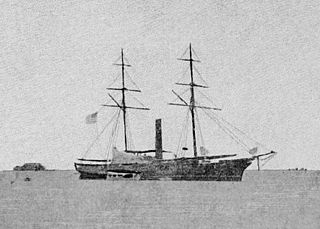 W
WThe first USS Saginaw was a sidewheel sloop-of-war in the United States Navy during the American Civil War.
 W
WUSS Saginaw (LST-1188) was the tenth of the Newport-class tank landing ships of the United States Navy which replaced the traditional bow door-design tank landing ships (LSTs). The second ship of that name, Saginaw was named after the river in Michigan. The LST was constructed by National Steel and Shipbuilding Company of San Diego, California, launched in 1970 and commissioned in 1971. During service with the United States Navy, the ship took part in US efforts in the Lebanese civil war and the Gulf War. Saginaw was decommissioned on 28 June 1994 and was transferred to the Royal Australian Navy on 28 August that year.
 W
WUSS St. Clair County (LST-1096) was a LST-542-class tank landing ship built for the United States Navy in World War II. Like most of the ships of her class she was originally known only by her designation, USS LST-1096, and, like all remaining LSTs, was renamed on 1 July 1955. She was named for counties in Alabama, Illinois, Michigan, and Missouri.
 W
WUSS Washtenaw County (LST-1166) was a Terrebonne Parish-class tank landing ship in commission in the United States Navy from 1953 to 1973. Named for Washtenaw County, Michigan, she was the only U.S. Navy vessel to bear the name. It is currently derelict. In October 2008, it was reported to be at the southeastern tip of Lord Island on the Columbia River in Rainier, Oregon at 46°07′18″ N 123°00′51″ W next to the Oregon shoreline. It was intended to become an exhibit at a maritime museum in Astoria, Oregon, but this has been put on hold indefinitely due to damage from vandalism and looting between 2005 and 2008.
 W
WThe USS Weiss (APD-135/LPR-135) was a Crosley-class high speed transport in service with the United States Navy from 1945 to 1970, with two short periods spent in reserve. She was finally scrapped in 1976.
 W
WUSS Wexford County (LST-1168), previously USS LST-1168, was a United States Navy landing ship tank (LST) in commission from 1953 to 1971, which saw service in the Atlantic, Caribbean, and Pacific and served in the Vietnam War..
 W
WThe third USS William C. Lawe (DD-763) was a Gearing-class destroyer of the United States Navy, named for aviation metalsmith third class (AM3c) William C. Lawe (1910–1942), who was killed on June 4, 1942, as a member of Torpedo Squadron 8 (VT-8) in the Air Battle of Midway.